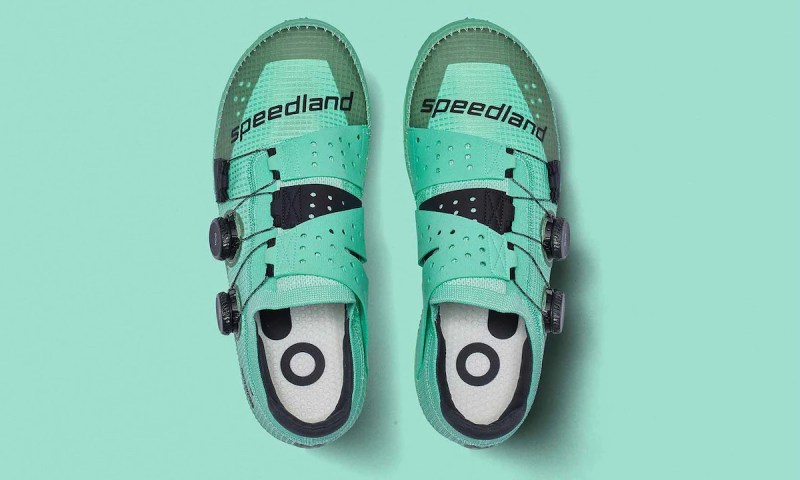
In 2019, I ran my first Ragnar Relay race. A Ragnar is a team distance race, broken up into legs, with each team member running three different times in a span of 24 hours. My particular race took place over a 20-mile stretch of the Appalachian Trail in northern New Jersey.
I had every intention of wearing my typical running sneakers for the event until a friend and fellow runner informed me that this decision was “dumb as hell.” Even though my everyday running sneakers were top-of-the-line, he told me that trail running sneakers designed explicitly for more challenging terrain were a wiser choice.
So, with zero knowledge about trail running sneakers, I bought the cheapest pair of trail sneakers at the sporting goods store. Bad idea. I ran just fine that weekend, but I’m convinced the aches and pains for the few days after the race were due to less-than-adequate footwear.
Every sport or hobby has equipment that’s more costly than the competition, usually because the equipment is made from superior materials and designed by cutting-edge technology. The dollar amount between the upper echelon of brands and the next level isn’t usually that different. The best trail running sneakers available today cost around $130-$145.
And then there’s the SL:PDX from Speedland, clocking in at an eye-popping $375 a pair. When I was approached about trying out a pair for the purpose of a review, I made the low-hanging fruit joke that the shoes better run the race for me.
The men behind the SL:PDX – Dave Dombrow and Kevin Fallon – have worked in-house on shoe designs for many of the top companies in the world, including Puma, Under Armour, and Nike. The two men decided to cut their own path, literally. They founded a company and “refused to cut corners” while designing the “best trail shoe that’s ever touched the earth.”
What Are the SL:PDX Made of?
The SL:PDX is constructed from some of the most premium materials available. The sneaker features a Michelin wrap outsole – yes, the same company that makes tires- and a dual BOA Li2 Fit System to the knit upper reinforced with Dyneema – a superlight fiber stronger than steel at the molecular level. The SL:PDX come standard with 6mm lugs that can be easily trimmed down to 3 mm for a smoother ride over mellow terrain. Speedland even provides a pair of cutters for trimming with every pair of sneakers.
If you’re the type of runner who geeks out on shoe specs, check out the Speedland website. I’m going to assume you’re a casual trail junkie just reading to get the answer to the question posed in the headline of this article. Are these trail sneakers worth the same amount as a monthly car payment?
Besides the materials used, Speedland puts a higher price tag on the SL:PDX because their trail running shoes are built to last and take a tremendous beating. The company is confident that the SL:PDX will hold up over hundreds of miles traversing the most challenging terrain. When you’re done beating the hell out of the sneakers, the company wants them back so they can deconstruct each layer and recycle the entire shoe.
Speedland SL:PDX Review

Much like taking a car out on the road in different elements, I took the SL:PDX out in different terrains and conditions to give the best possible review. I went on three separate runs with the SL:PDX sneakers. The first trail was dry as a bone and mostly flat. The second trail had more hills, hellacious rocks, and a few miles involved some steep climbs and downhill runs. The final run took place on a moderate trail a day after a heavy downpour that lasted over an hour. The conditions were muddy as hell and sloppier than your Uncle Joe eating a rack of ribs.
Here are the Positives to the SL:PDX Trail Running Sneakers.
- The traction remained consistently strong during all three runs, even while slopping through the mud. I kept lugs at the manufactured 6mm length.
- The sneakers are incredibly lightweight and didn’t weigh my feet down, even after getting soaked and muddy. The other trail running shoes I’ve tried all felt like bowling balls attached to my ankles after a few minutes in the slosh.
- The SL:PDX sneakers took the brunt of the assault when roots and rocks tried to trip my progress and kept me upright thanks to the Michelin tire bottoms. These trail sneakers don’t have much of a toe guard, but the rubber fronts of the shoes are hard enough to withstand a constant beating.
My only major complaint with the SL:PDX are the twist-to-tighten laces which loosened after extended wear. Call me old-fashioned, but I like to tie my shoelaces. A minor criticism is the style of the shoe. The SL:PDX are eye-catching for the wrong reasons and come in only one color which doesn’t have a name so let’s just call it Mint Chocolate Chip.
So Are These Speedland SL:PDX Worth the $375 Price Tag?
The answer is yes and no. These are serious trail running shoes for the serious trail runner. These shoes are built for the men and women who log in thousands of miles each year, travel weekly for races, and compete at high levels of racing. If you’re an individual who will put in hundreds of miles and demand “equipment” and not just shoes, a pair of Speedland SL:PDX is worth the investment.
For the semi-serious or casual runner, stick to the next level below. For under $375, you can buy yourself two pairs of top-rated trail running shoes and take the money saved and use it for race entrance fees and massage sessions.




